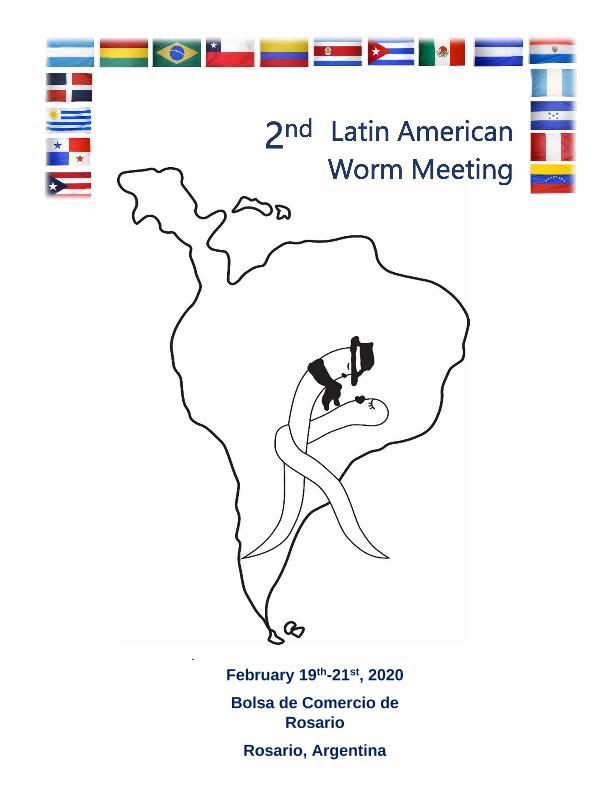Evento
Neural modulation of foraging strategies in C. elegans
Blanco, Maria Gabriela ; Zabala, Agustina; Alkema, Mark J.; De Rosa, María José; Rayes, Diego Hernán
; Zabala, Agustina; Alkema, Mark J.; De Rosa, María José; Rayes, Diego Hernán
 ; Zabala, Agustina; Alkema, Mark J.; De Rosa, María José; Rayes, Diego Hernán
; Zabala, Agustina; Alkema, Mark J.; De Rosa, María José; Rayes, Diego Hernán
Tipo del evento:
Congreso
Nombre del evento:
II Latin American Worm Meeting
Fecha del evento:
19/02/2020
Institución Organizadora:
Latin American Worm Meeting;
Título de la revista:
II Latin American Worm Meeting
Editorial:
Latin American Worm Meeting
Idioma:
Inglés
Clasificación temática:
Resumen
Despite the intermodulation between serotonergic and adrenergic signals is crucial throughout the animal kingdom, the molecular and cellular mechanisms underlying this interrelation are poorly understood. Given its simplicity and the highly conserved neurological pathways, Caenorhabditis elegans is a powerful model organism that can be used to provide insights into the neural circuits linking 5-TH and catecholamines. When food-deprived worms encounter food, 5-HT is released to slow-down their locomotion and to stimulate pharyngeal pumping. In contrast, Tyramine (TA) and Octopamine (OA), invertebrate counterparts for adrenaline and noradrenaline, stimulate locomotion and decrease pharyngeal pumping. We found that well-fed tdc-1 (unable to synthesize TA and OA) and tbh-1 (unable to synthesize OA) null mutants are hypersensitive to the slowing-down response upon food encounter, resembling starved worms. Moreover, exogenous TA and OA recover the increased slowing-down locomotion of tdc-1 null mutants, suggesting that both, TA and OA, antagonize 5HTdependent food-related behaviors. Furthermore, our calcium imaging recordings showed that the peak of activity of serotoninergic neurons (ADF and NSM) upon encountering food is significantly higher in a tdc-1 null mutant background. We also found that tdc-1 null mutants are hypersensitive to the paralysis produced by exogenous 5-HT. Therefore, we are using this assay to evaluate the paralysis of the different TA and OA null receptor mutants to identify which receptors are involved in this antagonism. Taken together, these results suggest that TA and OA counteract with 5- HT by driving opposing food-related behaviors and by inhibiting 5-HT release
Palabras clave:
C. elegans
,
biogenic amines
,
tyramine
,
crosstalk
,
serotonin
,
food-related behaviors
Archivos asociados
Licencia
Identificadores
Colecciones
Eventos(INIBIBB)
Eventos de INST.DE INVEST.BIOQUIMICAS BAHIA BLANCA (I)
Eventos de INST.DE INVEST.BIOQUIMICAS BAHIA BLANCA (I)
Citación
Neural modulation of foraging strategies in C. elegans; II Latin American Worm Meeting; Rosario; Argentina; 2020; 17-17
Compartir



